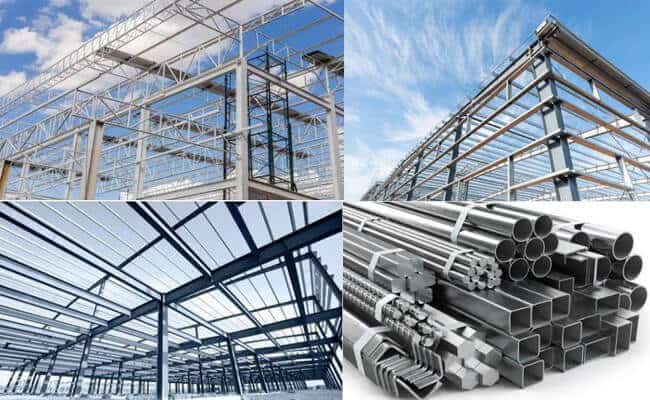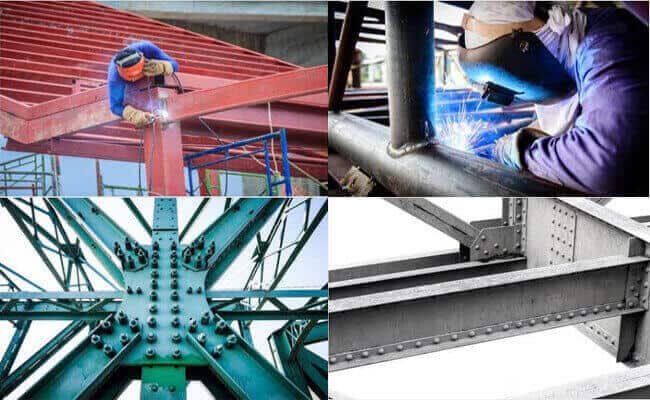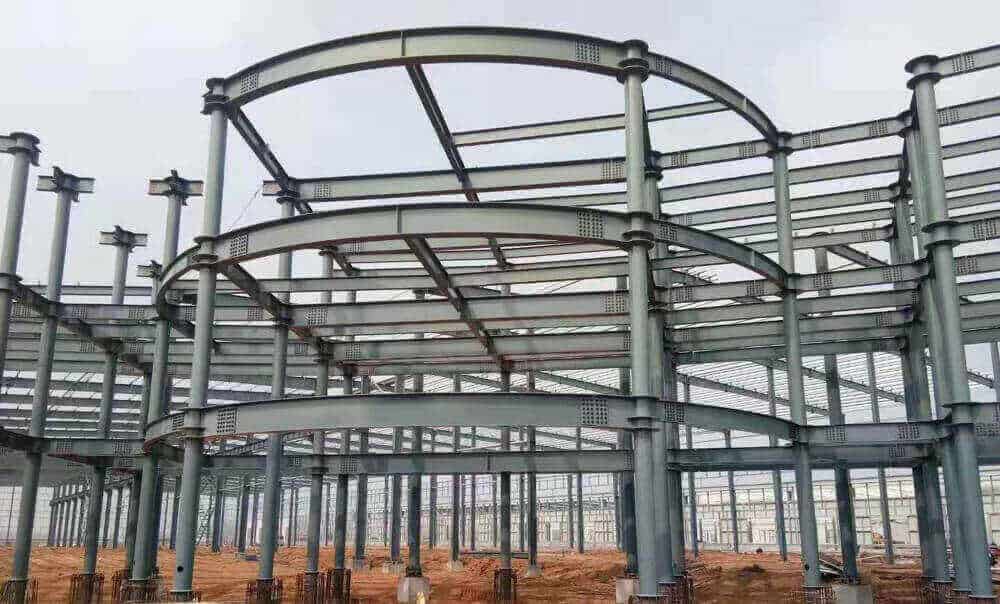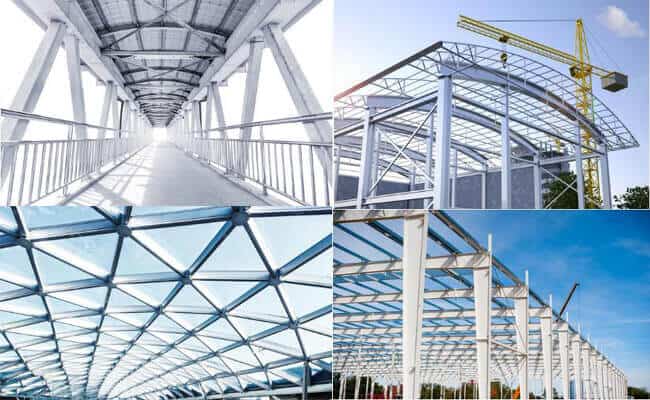The Steel Structure Specification
The steel structure is composed of steel materials and is one of the main building structures. The system is mainly composed of steel beams, columns, trusses, and other components made of section steel and steel plates. Welds, bolts, or rivets usually connect the components or parts. Its lightweight and easy construction are widely used in large-scale factories, venues, super high-rise buildings, and other fields.
It is an engineering structure composed of processing, connecting, and installing steel plates, round steel, pipes, cables, and various shaped steels. The structures must withstand the effects of different possible natural and artificial environments and are engineering systems and networks with sufficient reliability and good social and economic benefits.
Table of Contents
1.The Characteristics
2.Classification of steel structure
3.The advantage of Steel Structure
4.Steel Structure VS Concrete Structure
5.Application range of steel structure
5.1.Large span structure
5.2.High-rise building
5.3.Industrial building
5.4.Light structure
5.5.Towering structure
5.6.Removable or movable structure
5.7.Containers and large diameter pipes
5.8.Emergency building
The Characteristics
2.High reliability of steel structure work
3.The steel has good vibration (shock) and impact resistance
4.The degree of industrialization of steel structure manufacturing is relatively high
5.The metal structure can be assembled accurately and quickly
6.Easy to make a sealed structure
7.The steel structure is easy to corrode
8.The steel structure has poor fire resistance

steel structure
Classification of steel structure
Welded connection is the most critical connection method for steel structures at present. Its advantages are simple structure, material saving, easy processing, and automatic operation. But welding can cause structural deformation and generate residual stress.
Bolt connection is a commonly used connection method with convenient and rapid assembly advantages. It can be used in structurally mounted connections or detachable structures. The disadvantage is that the section of the component is weakened and easy to loosen.
Rivet connection is an ancient connection method. Because of its good plasticity and toughness, it is convenient for quality inspection and is often used in structures bearing dynamic loads. However, the manufacturing cost is labor-intensive, and the materials are used. In addition, the nail hole weakens the cross-section of the component, so it has been gradually replaced by welding in the manufacturing industry.

steel structure connection
The advantage of Steel Structure
2.In manufacturing, construction, and use, it has energy-saving advantages, environmental protection, and safety. Moreover, they are in line with the principles of sustainable human development.
3.Steel structure with the advantage of Large span, lightweight, large carrying capacity, easy to install, usually used in bridges, industrial workshops, warehouses, and other buildings.

Metal buildings
Steel Structure VS Concrete Structure
It can reduce the weight by 40% and save about 30% of the foundation.
The construction from the site to the main body can significantly reduce the water consumption during the installation, reduce the noise at the construction site, disturb the residents, wastewater discharge, and dust pollution; reduce sand mining and construction waste Emissions.
The CO2 emission of steel buildings for construction is about 480kg / m, which is more than 35% lower than 7474kg / m for traditional concrete. Simultaneously, when the building was demolished, the recyclable emissions of steel construction materials were reduced by more than 90%, and conventional concrete waste was reduced by about 60%.
The price of steel is 10% to 20% higher than reinforced concrete, steel structures, lower labor costs, foundation costs, and the income brought by shortening construction time and short-term loans. However, the different prices for steel and concrete structures are not too high.
As far as space utilization is concerned, buildings over 20 stories often show the advantages of steel structures. For example, global financial centers use steel structures. However, if reinforced concrete is used, the potential space utilization will be deficient. Therefore, considering the effective use of space, steel structures are more important than concrete, and the overall economic benefits of steel structures may be higher than concrete.
Due to the many advantages, metal structures have been widely used in industrial workshops, high-rise buildings, residential buildings, large public buildings, high-speed railways, thermal power plants, railway bridges, and offshore oil platforms.

steel structure application
Application range of steel structure
Large span structure
High-rise building
Industrial building
Light structure
Towering structure
Removable or movable structure
Containers and large diameter pipes
Emergency building
- Pre:None
- Next:Pre Engineered Steel Structure 2024/4/16
